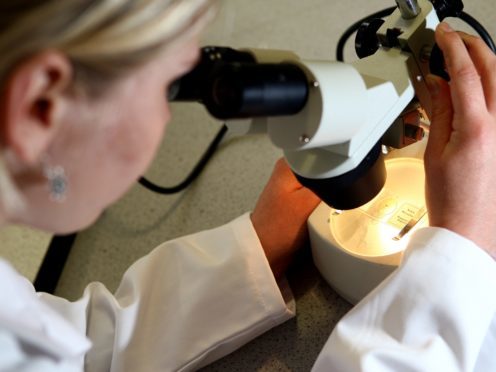The herpes virus could account for at least half of cases of Alzheimer’s disease, a scientist has claimed.
There are two types of herpes simplex virus (HSV): HSV1, also known as oral herpes, which causes cold sores and blisters around the mouth and on the face; and HSV2, which is generally responsible for genital herpes outbreaks.
Professor Ruth Itzhaki, who has spent more than 25 years at the University of Manchester investigating a potential link, looked to Taiwan as few countries collect the population data required to test the theory.
In Taiwan 99.9% of the population is enrolled in a National Health Insurance Research Database, which is being extensively mined for information on microbial infections and disease.
In 2017/18, three studies were published describing Taiwanese data on the development of senile dementia – of which Alzheimer’s is the main cause – and the treatment of patients with marked overt signs of infection with HSV or varicella zoster virus (VZV – the chickenpox virus).
Prof Itzhaki said: “The striking results include evidence that the risk of senile dementia is much greater in those who are infected with HSV, and that anti-herpes antiviral treatment causes a dramatic decrease in number of those subjects severely affected by HSV1 who later develop dementia.
“HSV1 could account for 50% or more of Alzheimer’s disease cases.
“It should be stressed that the results of these Taiwanese studies apply only to severe HSV1 (or VZV) infections, which are rare.
“Ideally, we would study dementia rates amongst people who have suffered mild HSV1 infection, including herpes labialis [cold sores] or mild genital herpes, but these are far less likely to be documented.”
Prof Itzhaki has previously shown that cold sores occur more frequently in carriers of APOE-ε4 – a gene variant that increases the risk of Alzheimer’s.
“Our theory is that in APOE-ε4 carriers, reactivation is more frequent or more harmful in HSV1-infected brain cells, which as a result accumulate damage that culminates in development of Alzheimer’s,” Prof Itzhaki added.
“Viral DNA is located very specifically within plaques in post-mortem brain tissue from Alzheimer’s sufferers.
“The main proteins of both plaques and tangles accumulate also in HSV1-infected cell cultures – and antiviral drugs can prevent this.”
The Alzheimer’s Society said the paper highlights existing studies that suggest people who have the herpes virus infection may be more likely to develop dementia, but due to the nature of the research it does not show a cause and effect relationship between herpes and dementia.
The charity’s head of research, Dr James Pickett, said: “Herpes is a hot topic in dementia research, as the infection appears to be more common in the brains of people with Alzheimer’s compared to healthy brains – but we don’t yet know enough about the relationship between the two.
“The link between herpes and dementia isn’t something that we feel people should worry about, although it’s sensible general advice to seek treatment for persistent cold sores.
“Dementia is not contagious and shouldn’t be thought of as an infectious disease.
“More research is needed to find out whether antiviral drugs can reduce dementia risk. Someone in the UK develops dementia every three minutes, and our scientists at the UK Dementia Research Institute are working hard to understand why, so that we can find ways to beat it.”
Dr David Reynolds, chief scientific officer at Alzheimer’s Research UK, said: “This review article discusses previous research linking the herpes viruses to Alzheimer’s disease and as such, adds no new evidence to support a link between the two.
“Research into a link between the herpes virus and Alzheimer’s is so far very limited, with only a few scientists studying the association. This review presents mainly correlative studies that do not give clear evidence of cause and effect.
“A growing body of evidence is linking the immune system with Alzheimer’s disease, and it’s important to explore the role that inflammation might play in the development and progression of the disease.”
The research is published in Frontiers in Ageing Neuroscience.
